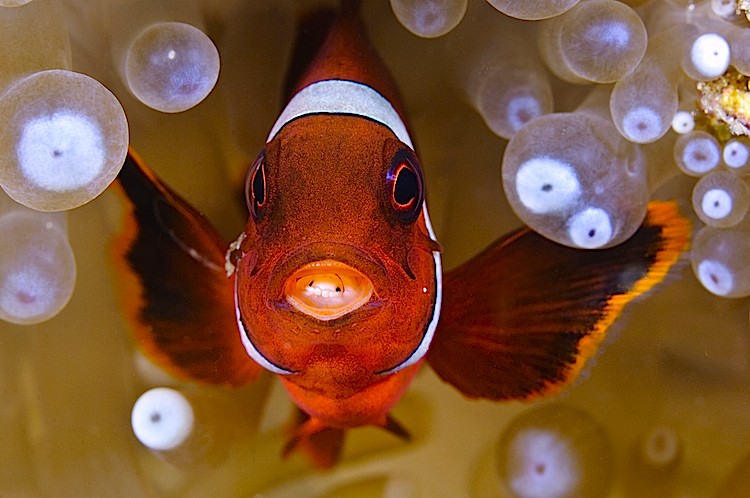This spinecheek anemonefish has an unwelcome resident living inside its mouth—the tongue-eating louse, Cymothoa exigua.
A parasitic crustacean, the blood-sucking isopod enters its host’s buccal cavity via the gills, and attaches itself to the base of the tongue. Using its piercing mouthparts, it feeds on blood and also mucus, holding itself in position with a pair of stout claws.
Due to lack of blood, the fish’s tongue shrinks in size. Then the parasite affixes itself to the tongue stub muscles leading the fish to use the parasite like its normal tongue.
Once C. exigua replaces the tongue, it also ingests food particles in the fish’s mouth, lessening the strain on its circulatory system. The critter does not seem to damage its host in any other way.
C. exigua is the only known parasite species that functionally replaces a host organ. It is believed to be harmless towards humans, but may bite if handled.






